Half resort and half fishing village, Saint Jean de Luz in France’s Basque nation was as soon as a whaling city whose fishermen usually visited Newfoundland within the Fifteenth century. In case you love historical past, are fascinated by Basque tradition and thrilled on the considered pirates, you’ll love this city.
Saint-Jean-de-Luz (typically spelled with a hyphen or two, typically with out) is a type of cities the place historical past and sweetness vie for first place. As soon as a hub for whalers and later a stronghold for corsairs, this attractive coastal city is filled with tales, from royal weddings to maritime adventures.
It sits on the coast of the Pyrenées-Atlantiques division (64), within the beautiful area we all know as Nouvelle Aquitaine, the place the river Nivelle flows into the ocean, piercing the lengthy stretches of unbroken shoreline which have made this former fishing port into a chief vacationer vacation spot and a favourite of surfers.
NOTE: Pages on this website might comprise affiliate hyperlinks, which herald a small fee for free of charge to you.
Behind the historic curtain
You wouldn’t usually anticipate a small Basque vacationer city to have this a lot historical past, however, sure. In all places I went, I stumbled over it.
The Golden Age of corsairs
Saint-Jean de Luz’s prosperity within the Fifteenth and sixteenth centuries stemmed from its thriving whaling and fishing industries. Nevertheless, the city’s fortunes took a dramatic flip within the Seventeenth century when whaling boats misplaced entry to Newfoundland fisheries and the city grew to become a hub for Basque corsairs.
These state-sanctioned privateers, in contrast to pirates, operated legally underneath the French crown, disrupting enemy transport and bringing in appreciable wealth. Time hasn’t tarnished the legacy of those corsairs: they continue to be celebrated in native folklore, and endure within the city’s structure and cultural identification.
BASQUE CORSAIRS − NOT YOUR EVERYDAY PIRATES
The English referred to the Bay of Biscay, particularly Bayonne and Saint-Jean-de-Luz, as a “nest of vipers” attributable to its corsair actions, akin to the “hornet nests” of Dieppe, Dunkirk, and Saint-Malo.
In contrast to pirates, who operated illegally, Basque corsairs have been authorized privateers, capturing enemy ships in help of France. Their very own ships value loads to run, as they needed to be geared up, and males employed and fed. Earnings have been shared by shareholders, the king and the crew.
Corsairs served an essential goal: King Louis XIV of France was eager to make his presence felt on the seas, and corsairs may disrupt the enemy with out France having to depend on its full naval fleet, a type of oblique naval warfare.
Usually, corsairs have been former whalers, adapting their whaling vessels to their new occupation.
They introduced again wealth, which promoted financial development, and the tales of their adventures grew to become a part of Basque folklore, handed down by the generations. The observe ended with the Treaty of Paris in 1856, however the legacy of notable Basque corsairs endures. Some grew to become well-known, even nationwide heroes.
Resilience, braveness, love of the ocean – Basques are nonetheless happy with their corsairs right now. The “Order of Basque Corsairs”, a cultural affiliation, preserves their reminiscence and highlights their contributions to society and the economic system.
A royal marriage ceremony venue
The city’s most illustrious occasion was (and stays) the wedding of King Louis XIV to the Infanta Maria Theresa of Spain. This union, a part of the Treaty of the Pyrenees, helped finish a protracted battle between France and Spain and resulted in one of the crucial essential political marriages in historical past.
Even right now, residents are happy with the royal marriage ceremony they hosted greater than 4 centuries in the past. You’ll discover loads of reminders of the occasion all through city, from the locations the place the King and the Infanta stayed, to the church by which they have been married, to the meals they ate.
Napoleon III’s engineering feat
Within the mid-Nineteenth century, Emperor Napoleon III decided which will nicely have saved the city from destruction: he commissioned three dykes to guard Saint-Jean de Luz from erosion and violent storms.
The Emperor was higher identified for his stays in close by Biarritz, however he usually visited Saint-Jean-de-Luz along with his spouse, Empress Eugénie.
His intervention not solely protected the city however helped – together with the arrival of the railway – remodel it into a preferred seaside resort, identified right now for its calm bay and family-friendly seashores.
World at struggle
Saint-Jean-de-Luz was all the time a strategic port, whether or not in fishing or corsair days, throughout wars with England or Spain, or a lot later, within the twentieth century.
Throughout World Struggle II, Polish troopers gathered right here in an effort to succeed in the Allies in Britain. Beneath thick cloud cowl, away from prying Nazi eyes, the troopers (together with British and French fighters) have been evacuated to Britain in what is named Operation Arlel.
A complete of 200,000 troopers and civilians have been capable of go away for Britain by Saint-Jean-de-Luz.
The top of the struggle and the decline in fishing led the city to pivot in direction of tourism, a shift that defines its character right now.
What to see and do in Saint-Jean-de-Luz
From its swish bay to the mountains past and its historical past and structure, it is a city by which you’ll have the ability to discover, study, laze, eat or stroll – there’s one thing for everybody right here.
Coastal points of interest of Saint-Jean-de-Luz
The dykes which now shelter the Grande Plage supply a scenic spot for households, secure from the highly effective browsing waves so well-known on this a part of France.
In case you’ve ever dreamed of browsing, that is your probability to attempt it out. Head for Bidart, 20 minutes away, to study the fundamentals.
Browsing just a bit past your style? Then get pleasure from a calmer tour of the coast by boat.
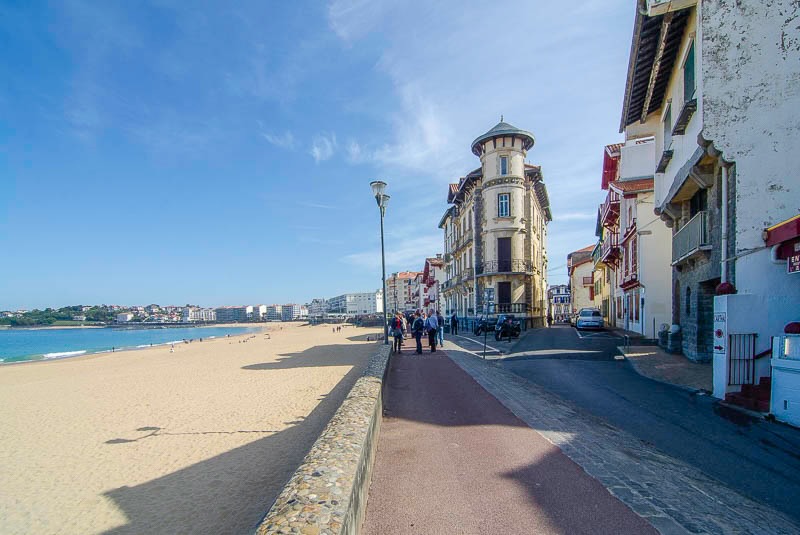
In case you’re not up for the seashore, head down the Promenade and benefit from the view – with the ocean on one aspect and loads of Basque structure on the opposite.
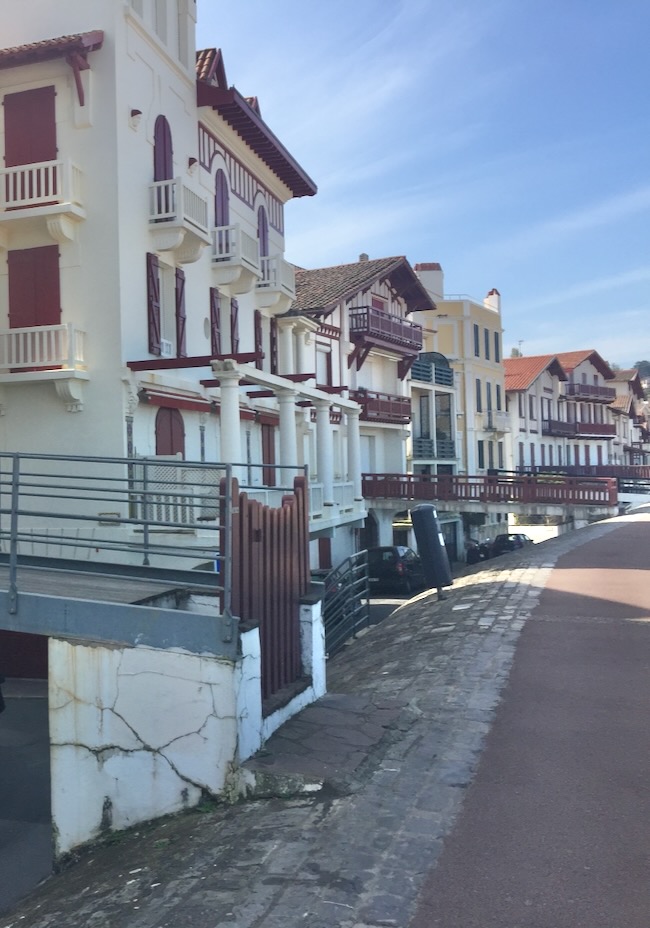 You may stroll alongside the promenade – word the little bridges that join the walkway to every Basque home ©OffbeatFrance
You may stroll alongside the promenade – word the little bridges that join the walkway to every Basque home ©OffbeatFranceWhereas the Grande Plage is calm and serene, you’ll discover the waves simply past city: Lafitenia is the perfect identified browsing seashore, however you’ll additionally discover the waves at Mayarco, Erromardie and Sainte Barbe. And there are loads extra, a brief stroll from the historic heart.
Away from the seashore, the picturesque port is precisely what you’d think about a typical Basque fishing village to be.
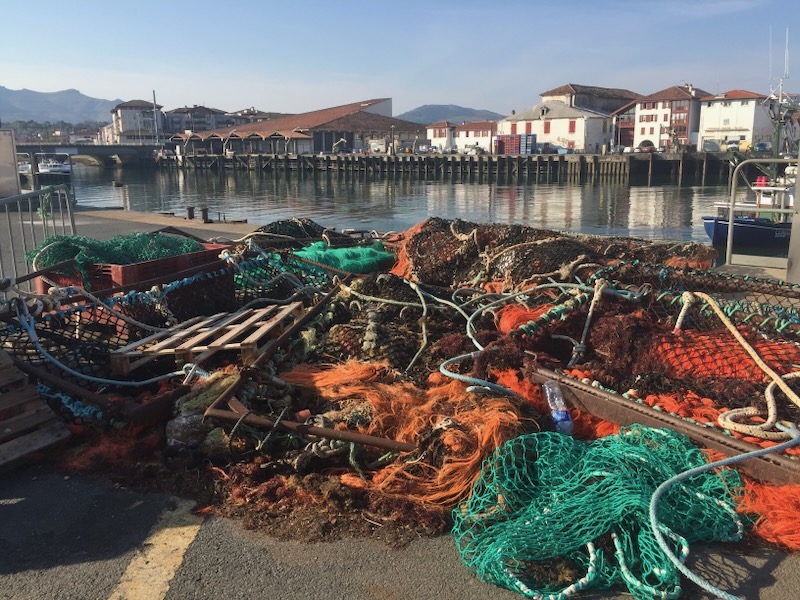 For years, Saint-Jean-de-Luz was certainly one of France’s largest fishing ports ©OffbeatFrance
For years, Saint-Jean-de-Luz was certainly one of France’s largest fishing ports ©OffbeatFranceA attribute of the city are the extea, or basque homes.
You’ll acknowledge them instantly: they’re adorned with coloured half-timbering, normally darkish crimson (symbolizing freedom), but additionally inexperienced (hope) and sometimes blue. The white of the homes represents religion.
Historic websites of Saint-Jean-de-Luz
Given its historical past, Saint-Jean-de-Luz has an abundance of web sites that mirror its extremely wealthy previous.
Saint-Jean-Baptiste church
For me, that is the city’s primary historic sight, the place Louis XIV and Maria-Theresa bought married on 9 June 1660.
You may’t miss it – it’s on the primary pedestrian road, rue Gambetta, and also you’re certain to finish up right here in some unspecified time in the future.
The biggest and best-known Basque church in France was constructed on prime of an extended string of church buildings, beginning with a Twelfth-century Romanesque church, which was succeeded by a number of others, every worn out by fireplace or storms.
At the moment’s church was constructed within the early Seventeenth century and was nonetheless principally a development website when the royal marriage passed off.
It’s most well-known (along with the marriage, after all) for its inside of oak galleries, wrought iron staircases, monumental baroque altar and hanging boats.
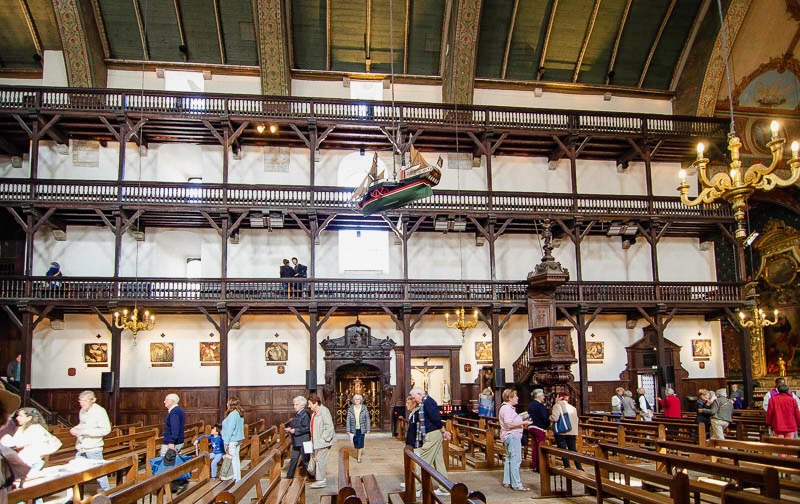
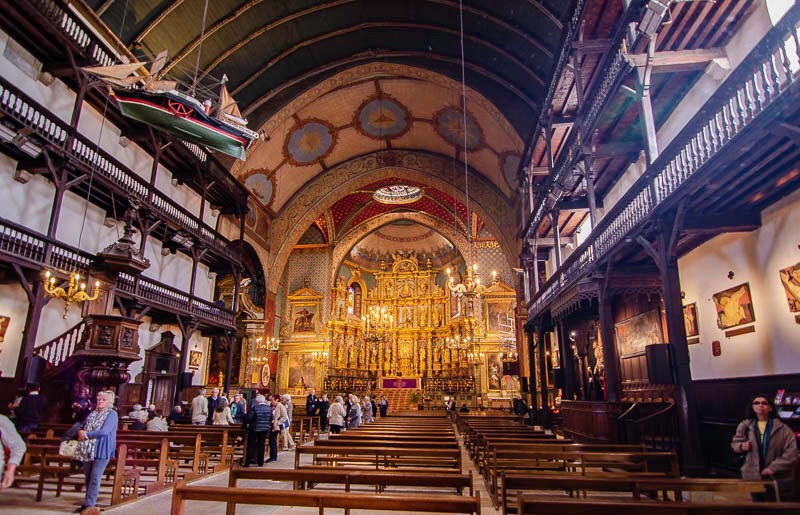 High, inside St John the Baptist church, its galleries constructed to resemble a ship. Backside, the dazzling altar, vaulted ceiling and boat ©OffbeatFrance
High, inside St John the Baptist church, its galleries constructed to resemble a ship. Backside, the dazzling altar, vaulted ceiling and boat ©OffbeatFranceA lot of small-scale mannequin boats cling from the ceiling, donated by sailors in search of blessings for a secure voyage and highlighting the city’s deep connection to the ocean. One in all these was a present from the Empress Eugénie.
The church additionally holds a variety of non secular artistic endeavors: the fabulous altar, after all, but additionally a Louis XIV embroidery, a Fifteenth-century stone Virgin, a portray representing the Last Judgment, and a extra trendy sculpture (1950) of Joan of Arc by Actual del Sarte.
Maison Louis XIV
One other well-known website is the Maison Louis XIV, the place the King spent greater than a month ready for his fiancée’s arrival from Spain. An instance of Seventeenth-century Basque wealth, the home, inbuilt 1643, would have been almost new when Louis arrived.
It was constructed by Johan de Lohobiague, a outstanding shipowner who additionally occurred to be the city’s mayor on the time, a logo of the city’s Golden Age. Now, it’s a museum.
Maison Joanoenia
The “different” well-known home is, after all, the Maison Joanoenia, or Maison de l’Infante, which housed her for a number of nights after she arrived for her marriage ceremony.
This elegant Seventeenth-century constructing was named for one of many metropolis’s rich corsairs, Joannot de Haraneder. Sadly, many related homes have been destroyed in the course of the varied fires, storms and tidal waves that broken town over the centuries.
You may’t miss it: it’s proper on the port, all pink and golden bricks and stones and a watchtower to look at the motion of ships.
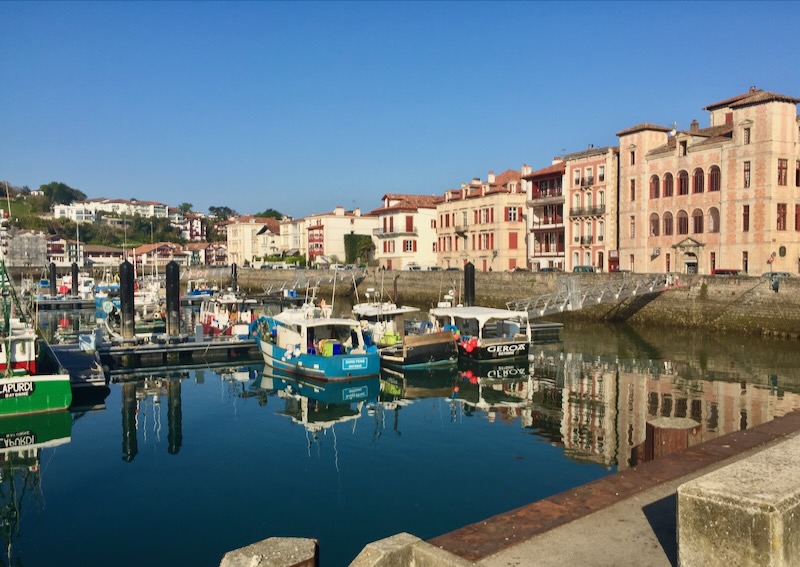 On the acute proper, the Home of the Infanta, or Maison Joanoenia ©OffbeatFrance
On the acute proper, the Home of the Infanta, or Maison Joanoenia ©OffbeatFranceI can’t assist however assume it didn’t carry the Infanta luck – her marriage ceremony wasn’t precisely an impressive success, together with her husband, Louis XIV, straying usually. He would have many mistresses, and would remarry proper after Maria-Theresa’s dying in a secret ceremony to yet one more mistress, Madame de Maintenon.
Place Louis XIV
Additionally within the heart of city is the Place Louis XIV, the city’s most picturesque sq., crowded in winter or summer time.
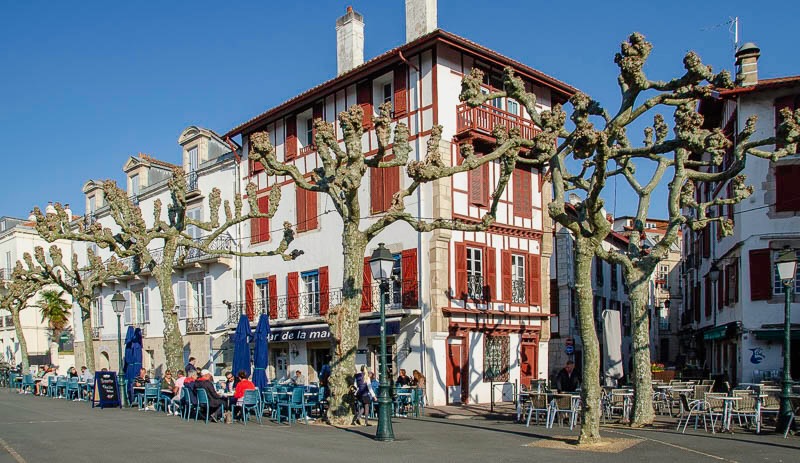 Even in winter, it stays the right gathering place for all seasons ©OffbeatFrance
Even in winter, it stays the right gathering place for all seasons ©OffbeatFranceEverybody converges right here, residents and vacationers, and in summer time, artists and musicians. Largely, I café-hopped, indulging in my favourite pastime, people-gazing.
Delicacies of Saint-Jean-de-Luz
All that strolling is certain to whip up an urge for food, and it’s no secret that the Basque area is famend for its meals, whether or not on the French or the Spanish aspect of the border. In actual fact, Saint-Jean-de-Luz is dwelling to no fewer than 16 Michelin-starred eating places inside a half-hour radius of city.
Two excellent food-related experiences stick in my reminiscence.
Les Halles
As is usually the case in French cities, there’s a lined market, Les Halles (which implies simply that, “lined market”). Seize what you want for a picnic, or when you’ve got a kitchen, put together to regale your self with the perfect recent fish and seafood. Given the city’s fishing historical past, you’ll should pattern some recent sardines and anchovies.
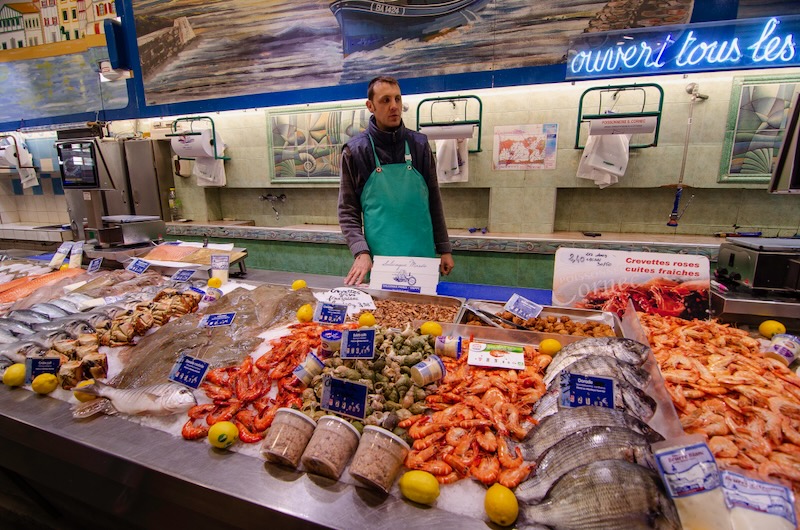
Additionally well-known in that is area are Basque sheep’s cheeses, bought by native producers available in the market, in addition to pork merchandise.
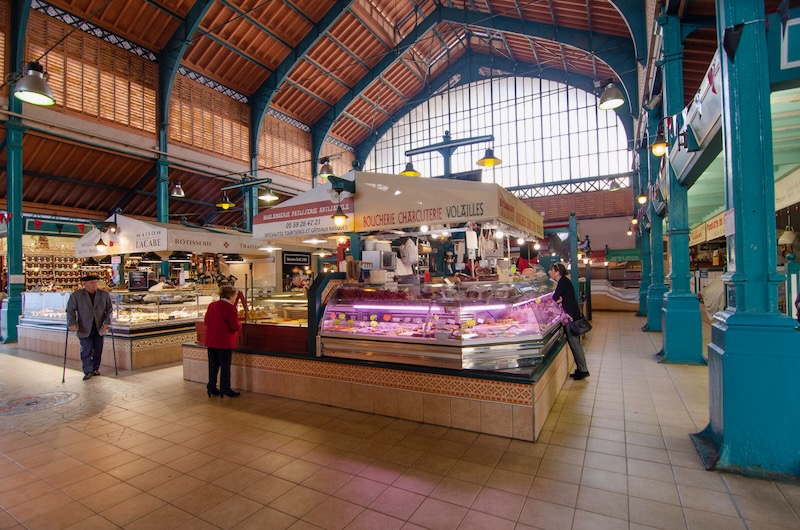
That is the place to attempt some charcuterie, not forgetting that town of Bayonne, so well-known for its ham, is simply half an hour away.
Higher but, attempt the kintoa ham, comprised of a neighborhood pig introduced again from the brink of extinction only some a long time in the past. Purchase some at Les Halles or on the Pierre Oteiza store.
Candy and sweeter
Sweets of 1 variety or one other appear to have made this city dwelling.
Begin with some Basque macarons from Maison Adam, that are nothing just like the macarons you’ll discover in Paris specialty shops. They’re made with almonds, and their recipe might date again almost 1000 years. They apparently got here to fame at Louis XIV’s marriage ceremony, when Mr Adam crossed the road to supply some to Louis XIV’s mom. A minimum of that’s the story.
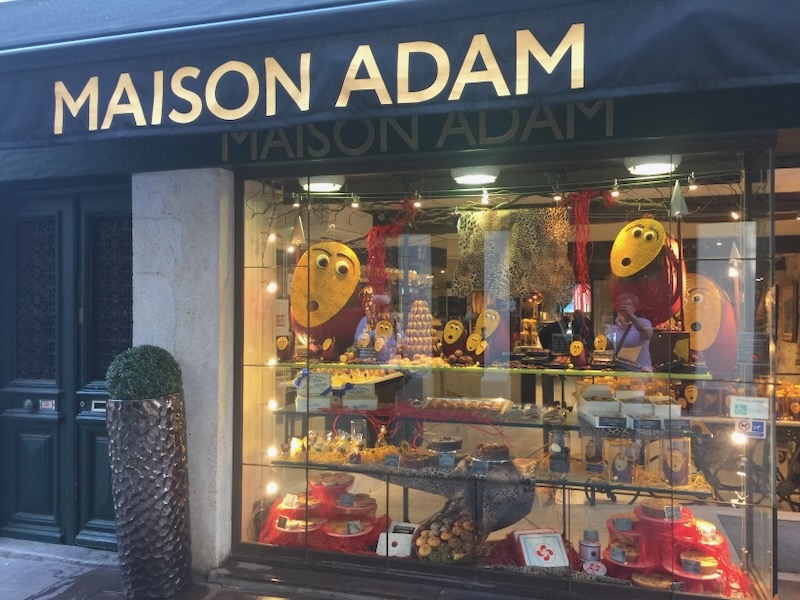 Originator of the well-known native macarons, Mr. Adam started making them within the Twelfth century.
Originator of the well-known native macarons, Mr. Adam started making them within the Twelfth century.After which there’s Pariès, based in 1895, identified for its chocolate and sweets.
The kanouga, invented in 1905, is a standout delight comprised of caramel and darkish chocolate. This deal with gained worldwide acclaim, at one level capturing the title of finest caramel on the earth. At the moment, 100 kg are produced each day in six flavors, together with the brand new Kaxu with salted caramel and Espelette pepper.
Pariès additionally launched the muxu, a gluten-free, lactose-free biscuit, reportedly born of a macaron mishap. Legend has it this candy wasn’t a creation however a mistake that occurred when the pastry chef added an excessive amount of almond and never sufficient sugar to his macaron recipe.
Moderately than throw the combination away – almonds and sugar have been each very treasured – he turned it right into a biscuit that regarded like a young kiss. It is available in 5 flavors, and it is best to do your due diligence and check out each single one.
You’ll additionally discover the well-known Gateau Basque right here, first elaborated within the sixteenth century, made with almonds and crème patissière or black cherries.
Need somebody to arrange all of it for you? Take a meals tour – this one features a journey to Les Halles.
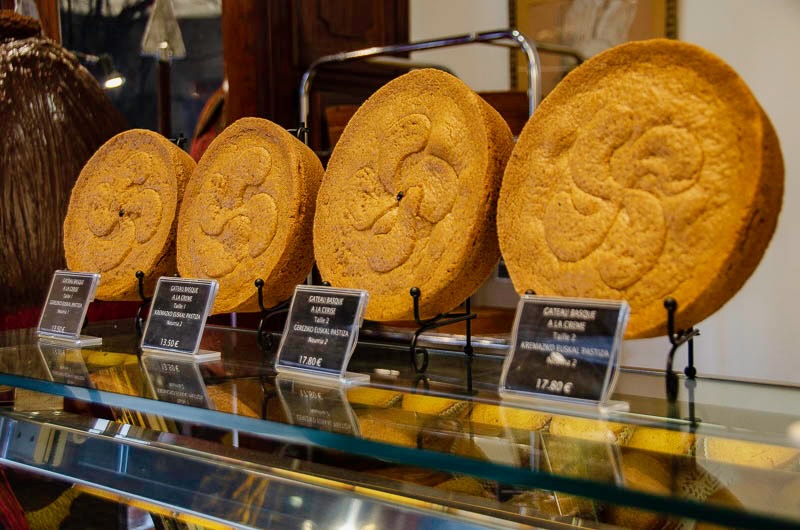 A typical number of the well-known Basque cake ©OffbeatFrance
A typical number of the well-known Basque cake ©OffbeatFranceSearching for Basque crafts
In case you get pleasure from native artisanal items, made by hand with methods handed down the generations, you’ll discover loads of them right here.
The well-known striped Basque materials could be purchased in every single place on the town, however a couple of minutes away you may as well go to the Lartigue manufacturing unit and see how they’re made (and discover ways to keep away from imitations). You may guide visits right here however examine to see in the event that they’re in English (most are usually not).
That is additionally the place you’ll discover the everyday woven canvas footwear, or espadrilles, which each and every French individual makes use of in summer time and on the seashore.
On the rue Gambetta you’ll discover an genuine Basque beret store, Laulhere.
Reality: the beret originated within the area subsequent door, the Béarn. Manufactured from sheep’s wool, some 400 years in the past it was utilized by shepherds as safety in opposition to the climate. Given the quantity of water it takes to provide, workshops moved close to the Basque gaves, or mountainous torrents, and made the beret a logo of Basque identification. A great beret may very well be handed down a number of generations…
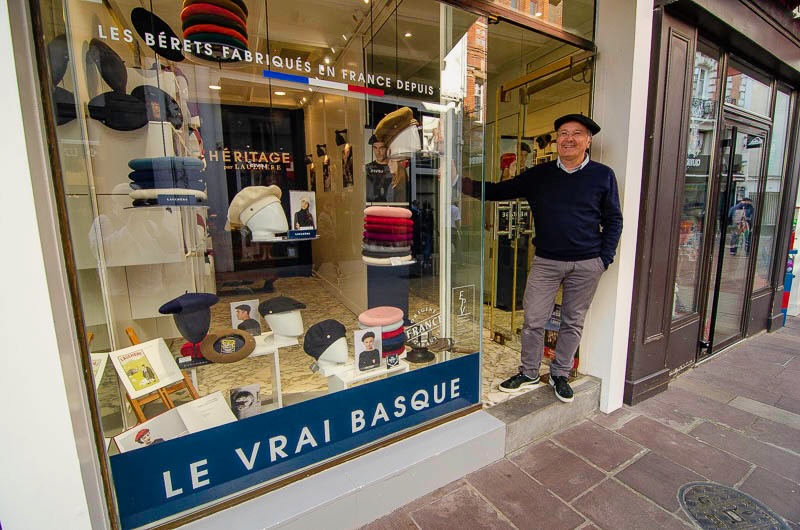
Exploring the world round Saint Jean de Luz
Straightforward walks round Saint-Jean-de-Luz
These aren’t precisely day journeys since you don’t want a whole day, however in case you’d wish to get out a bit on foot, right here’s what to do:
- When you’ve visited the city heart, the very first thing to do is stroll across the city itself. With its shoreline and historical pedestrian streets, it’s excellent for strolling.
- Stroll to Ciboure, simply reverse Saint-Jean-de-Luz throughout the bridge over the Nivelle River that separates the 2 cities. It’s a 15-minute stroll and also you’ll get a stunning view throughout the port. In case you’re there on a Sunday morning, you are in luck: there is a cheerful weekly market.
- Maintain going (for about 1hr 40m) alongside the bay to the Seventeenth-century Socoa Fort, which you’ll see within the distance. Constructed by Louis XIII to guard Ciboure from Spanish invaders, it was usually destroyed and rebuilt. You may’t enter, however you’ll get a good suggestion of the various navy structure by strolling round it (to not point out nice views of the bay).
- An extended stroll (14km/8.5mi) is alongside the Sentier du Littoral, or the Coastal Path from Bidart to Hendaye. You don’t should stroll all of it – simply 20 minutes will get you to the Colline Sainte-Barbe, for a superb view overlooking the bay of Saint-Jean-de-Luz.
Excellent day or half-day journeys from Saint-Jean-de-Luz
The most effective-known elements of the Basque inside simply occur to be near the ocean, so you will not should go far.
Wonderful roads take you uphill from Saint-Jean-de-Luz and also you’ll marvel at how shortly the panorama adjustments from the seacoast beneath to the inexperienced hills and farms of the Basque nation.
- Sare: A pleasant village within the inside, additionally identified for its Seventeenth-century Church of Saint-Martin and the Basque Cake Museum. An ideal base for exploring the area (I stayed on the family-owned Lodge Arraya and liked it!) and to hop on the little practice that goes up the Rhune mountain. Sare is on the official checklist of Most Stunning Villages of France.
- La Rhune: The Petit Prepare de la Rhune departs from the Col de Saint-Ignace station in Sare. It is a cog railway that has been in operation since 1924. Alongside the way in which, you’ll get beautiful views of the Pyrenees and the Atlantic Coast, and see rural “pottok” ponies discovered solely within the Basque nation. You may hike from the highest, however be sure to examine the climate first.
- Ainhoa: Like Sare, Ainhoa is on the “most stunning villages” checklist. That is the right place to get pleasure from Basque structure, to not point out the Basque outdoor. Many mountaineering trails begin right here, and the historic Manner of St James, generally known as the Camino, goes by this village.
- Espelette: This village is acquainted to all French, at the very least in identify. It’s the dwelling of the famed piment d’Espelette, or crimson pepper, not too robust however smoky and flavored. Most issues right here revolve round this product: there’s an annual competition, a museum, and if the season is correct, you’ll see strings of peppers drying on out of doors partitions throughout city. You’ll discover loads of native specialties to purchase as nicely.
- Cambo-les-Bains: Like every city ending in “les bains”, anticipate spas and thermal baths. And don’t miss the Belle Epoque Villa Arnaga, the previous dwelling of Edmond Rostand, creator of Cyrano de Bergerac.
- Saint-Jean-Pied-de-Port: That is the leaping off level for the Camino. In distinction with its historical cobblestoned streets, it has that specific environment of latest beginnings, with loads of pilgrims setting off on their Camino throughout northern Spain.
- Hendaye: You’re nearly in Spain by now, so don’t be stunned if a little bit of that Spanish taste creeps in. Along with the prolonged seashore, stunning vistas and Belle Epoque villas, you’re near the Château d’Abbadia, a neo-Gothic fort perched on a cliff.
- San Sebastian/Donostia: An ideal day journey to go “overseas”, in case you’re within the temper for one thing totally different (though as a part of the Basque Nation however on the Spanish aspect, you’ll discover as many similarities as variations). The town is thought for its beautiful seashore and bay, and its world-renowned meals and cooks.
- Biarritz: North of Saint-Jean-de-Luz, you will have Biarritz, a mixture of stylish and surfer vibe. As soon as the playground of European royalty, you’ll nonetheless really feel that air of sophistication – extra Nineteenth-century villas than you’ll be able to depend, and loads of Artwork Deco too. Catch the views from the lighthouse or the Rocher de la Vierge, seize your picnic from Les Halles, and head right down to the seashore.
- Bayonne: The second-largest metropolis within the Pyrenées-Atlantiques division, Bayonne is a conventional city with an enormous cultural and culinary heritage. It’s dwelling to the well-known Jambon de Bayonne (ham) and it has a status because the chocolate capital of France. That is additionally an ideal place to find out about Basque historical past, and a must-see is the gothic St Mary’s Cathedral with its mismatched towers.
The Basque Corniche and coastal path
You may discover the coast in a number of methods.
You may drive alongside the scenic coast street, which I’ve carried out and completely loved.
You may stroll it alongside the Sentier du Littoral, though it’s a must to be considerably in form as a result of there are ups and downs.
Or you’ll be able to see all of it from the water by taking a ship journey alongside the coast.
get to St Jean de Luz
To get to Saint-Jean-de-Luz is straightforward.
- You may fly in: the Biarritz airport is a 20min drive from Saint-Jean-de-Luz, and you’ll take a taxi into city or hop on a bus. You can additionally fly to San Sebastian in Spain and take a bus straight from the airport to Saint-Jean-de-Luz.
- You may drive: Saint-Jean-de-Luz is on the tip of France, so determine whether or not you wish to drive right here or maybe take the practice and hire a automotive on website. To get round regionally, even in case you’re going to Biarritz or Bayonne, you gained’t want a automotive – you should use native buses. Your finest wager for the most recent info is the native Vacationer Workplace, which you’ll name or e mail.
- You may cycle: There are native cycle routes alongside uncrowded roads. Yow will discover loads of info on this vacationer workplace website. The positioning is initially in French however in case you click on by to the route you need, you’ll be able to then select English to learn the small print.
The place to remain
I’ve by no means really stayed IN Saint Jean de Luz! After I visited the city, I stayed inland within the stunning village of Sare, in an impressive family-owned lodge, the Lodge Arraya, a 20min drive to city, within the Basque heartland.
In case you’d moderately keep on the town, take your choose from the map beneath:
Earlier than you go
Saint-Jean-de-Luz is a bit sudden, a pleasant combination of browsing and fishing, of historical past, tradition and pure magnificence. No matter purpose attracts you right here, it is a city whose environment and sweetness you gained’t overlook.
In case you’re considering of spending just a few days within the space, be sure to learn my one-week Basque nation itinerary to assist together with your plans!
Did you get pleasure from this text? I would love in case you shared it!

















